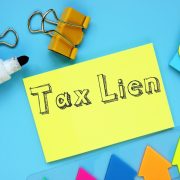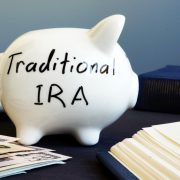Tax Lien Investment Tips: Using a Self-Directed IRA Unconventionally
Using a Self-Directed IRA opens up the possibility of investing in a wide variety of assets. One investment that IRA investors can reach: tax liens. But what are tax liens, how do they work, and how might they fit within a retirement investment strategy? Here’s what you will need to know to use this unconventional investment to your advantage.
What is a Tax Lien?
It all starts with the owner of a piece of real estate. When this owner fails to pay his or her taxes on the property, the government can then put a lien on the land, which is a legal claim against this land. This property cannot be sold until the outstanding debt is paid.
An investor with some money can, however, purchase a tax lien. According to some data, 2017 saw some $14 billion in property taxes unpaid, showing just how big the tax lien market can be. According to the data, about one third of that money went to private investors who realized that there is potential for making money in properties with tax liens.
Why does this benefit governments? Because the government is simply looking to collect money on the taxes owed; if a private investor can make that happen by selling the tax lien, then it’s a win for the government, which otherwise might never have gotten paid the taxes it was owed.
But what we are concerned about here is the investment potential. So that leads us to the next question: how do investors make money on this?
Using a Self-Directed IRA to Invest in Tax Liens
Investors who purchase the tax lien then pay back the full amount of the lien to the issuer of the tax lien, usually a local municipality. The owner of the property now owes the investor this money. Typically, that can mean paying an interest rate above 10%, which results in significant returns for the investor. (“Typically,” also means that this can vary on a state-by-state basis, so make sure you know your state’s individual laws regarding these tax liens before you take any action.)
You might wonder why an investor might take on that sort of risk. If the owner of the property cannot pay the taxes, why would they be able to suddenly pay the investor? In actuality, the rates of this are actually quite high, which means a nice return for the investor. If the owner is unable to make these payments, the investor may be able to foreclose on the property, but Investopedia notes that this is a fairly rare occurrence.
Tips for Investing in Tax Liens
With returns that high, it’s easy to see why someone might be interested in adding tax liens to a Self-Directed IRA portfolio. Here are some tips for managing this kind of asset properly:
- Research, research, research. This is the kind of field that you do not want to simply plow into. You want to understand your state’s laws, how the auction process works, as well as your responsibilities as an investor in a tax lien. Knowing all of this beforehand should be considered essential.
- Build some experience in real estate first. If you have no experience in real estate at all, suddenly jumping into the deep end of tax liens can be a bit of overwhelming. It helps to know your way around real estate before you start the process of thinking about tax liens.
With a Self-Directed IRA, the investment value of a tax lien can be a great way to build for retirement. But you need to cover your bases first. Interested in learning more about Self-Directed IRAs? Contact American IRA, LLC at 866-7500-IRA (472) for a free consultation. Download our free guides or visit us online at www.AmericanIRA.com.








